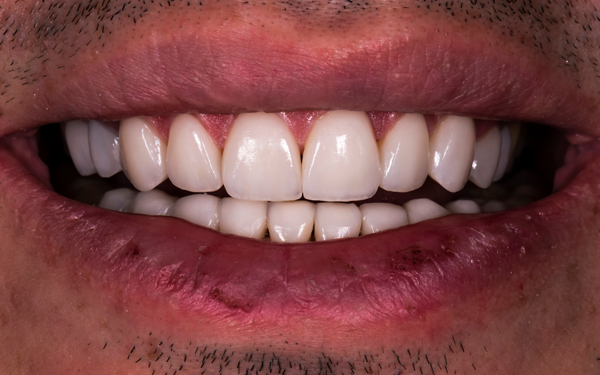Will a Bone Graft Fall Out?

Adults with gum disease or who have lost teeth may be in a need of a bone graft to restore the jawbone. Severe bone loss in the jaw impacts appearance and the likelihood that tooth replacements will stay in place. A dental graft is a minor procedure that stimulates new bone growth. The procedure is common and has only a low risk of complications, including the material falling out.
What types of dental bone grafts are there?
Depending on how severe the bone loss and the causes of loss, a dentist may recommend one of three types of graft procedures. A block bone graft takes bone from the back of the jawbone, close to where wisdom teeth are found. A socket graft can be completed when a tooth is extracted and uses bone from the same area in an effort to prevent bone loss. A sinus lift occurs when top molars have been lost and the sinus moves downward into the space left between the teeth. The lift restores the sinus to its position and uses a graft to repair the teeth.
The need for a dental graft
Dental hygiene is important for tooth health, and it also promotes strong gums free from disease and infection. Periodontitis is a condition that can severely affect the health of both the gums and the teeth. Loss of adult teeth increases the risk of bone loss in the jaw.
A dental graft exposes the existing bone to tiny pieces of bone material, creating new bone cells and growing bone where it is most needed. Patients needed dental implants often undergo grafting to prepare the jaw as a stable base for the new teeth.
The graft process
Most often, a dental or gum graft is performed by a dental specialist. Graft material may be taken from either animal or human donors, though it may also come from the patient. A small incision is made in the gum, and the graft material is placed inside. The incision is then sutured closed.
The recovery process of a dental bone graft
Following a graft, a patient may experience some discomfort. The incision in the gums may cause soreness, but pain can be managed through ice and over-the-counter anti-inflammatory drugs. There are low risks of bleeding, infection, or the development of a blood clot. As the graft is made up of many tiny particles, a patient may experience small particles in their mouth in the days following surgery.
How can a dental bone graft be protected?
It is normal for a small amount of the graft material to fall out of the incision site, but by following postoperative instructions, a patient can prevent total graft displacement. Patients are generally instructed to abstain from vigorously spitting or rinsing for the first three to five days after a procedure. They should avoid pulling or lifting the lip to examine the stitches and should not apply any pressure to the site.
Conclusion
A dental bone graft may be necessary to prevent further bone deterioration or to prepare for dental implants. Consult with a qualified dental specialist to reduce the risk of complications.
Request an appointment here: https://www.mysaratogadentist.com or call My Saratoga Dentist PLLC at (518) 675-3094 for an appointment in our Saratoga Springs office.
Check out what others are saying about our dental services on Yelp: Will I Need a Bone Graft for Dental Implants in Saratoga Springs, NY.
Recent Posts
A dental bone graft is a critical procedure used to build up or restore the bone in areas where it has been lost or damaged, often as a result of tooth loss, injury, or infection. The success of dental implants relies heavily on the quality and quantity of the jawbone, which provides a stable foundation…
A bone grafting procedure involves the restoration of lost jawbone, which is necessary before dental implant placement if the patient does not have enough healthy jawbone to support the implant long-term. This review discusses dental bone grafting for the purpose of restoring lost jawbone ahead of dental implant placement.Not every dental implants patient requires bone…
Not every patient requires a bone graft procedure before tooth replacement from an implant dentist, but it may be necessary for certain situations. This review discusses the role of bone grafting in the implant dentistry process and what to expect before, during, and after a bone graft procedure.A bone grafting procedure is needed when there…
A dental bone graft is the recommended procedure to restore a deteriorated jawbone. Many patients often want to know how quickly their bones will heal and what the aftercare process is after this treatment. The following are answers to some of the most commonly asked questions regarding dental bone graft aftercare.A dental bone transplant is…


